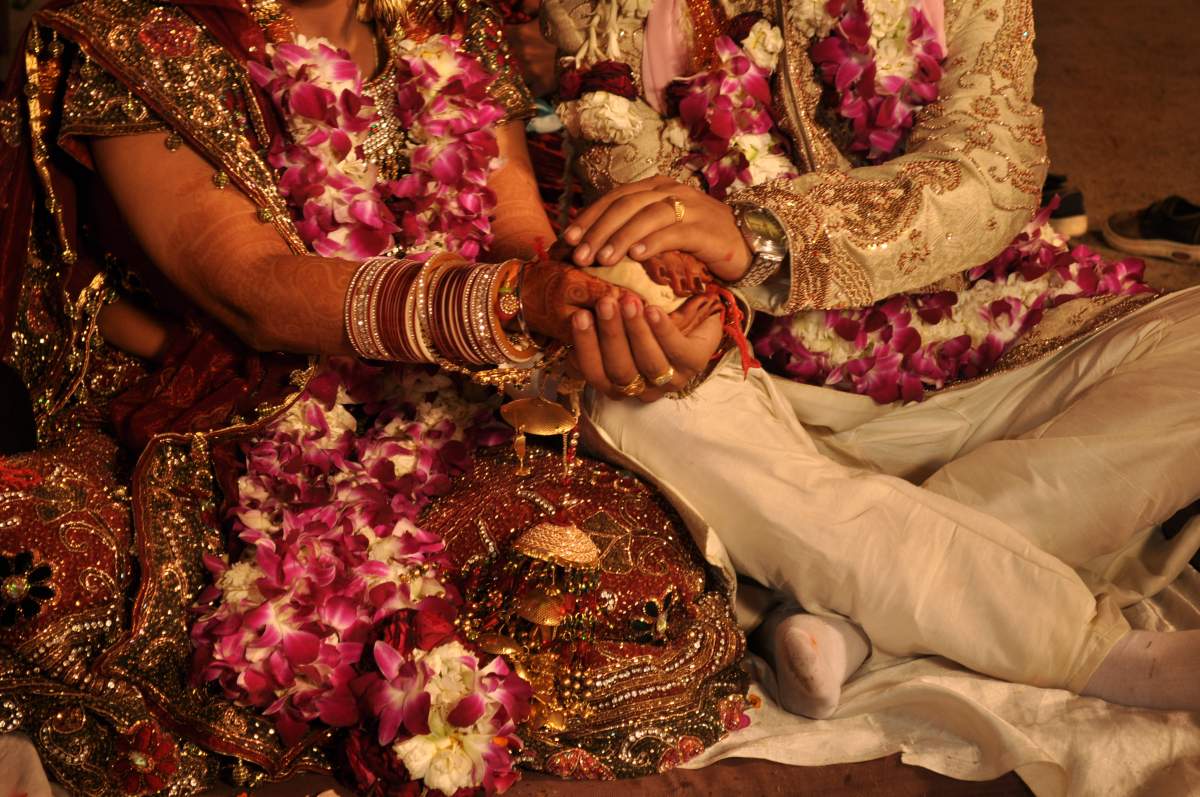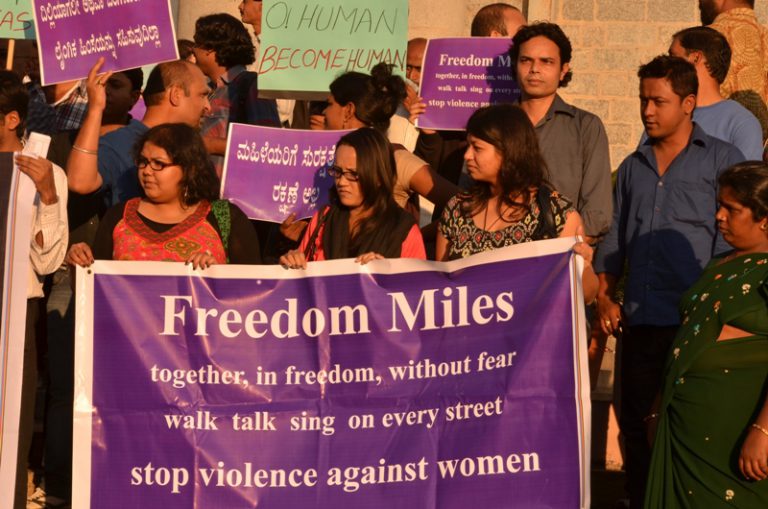Patriarchy in Indian marriages

Soumya is a passionate generation equality activist, an ardent reader and writer. She also posts on her Instagram blog @sapien.approach.

[responsivevoice_button voice=”US English Female” buttontext=”Read out this Theel for me”]
A friend of mine recently posted on her social media account about a close friend of hers, Maya, who did not attend her wedding. And the reason? Because Maya’s in-laws did not allow her. Maya was told that things would not be the same after marriage. Incidents like these take place not only in rural but also in cosmopolitan families who pretend to have a modern outlook. Women are always expected to adjust and “behave” only in a certain way after marriage in the name of respect and change as decided by the in-laws. They also have restrictions on going to their parents’ place. Not just this, patriarchy in Indian marriages is present in different shades among families.
Marriage: a societal pride
The concept of marriage in Indian families is always considered sacred. However, many times, it leaves many like me wondering what is sacred in it except the rituals. It is still believed that marriages are made in heaven; however, there is an increase in the number of divorce rates over the years. Inequality and patriarchy are the two elements that never fail to live along with marital relationships from the day a match gets fixed. Here I am mentioning that subtle shades of patriarchy in a family even if it’s a happy marriage. In this article, I would be talking more from the women’s perspective.
Marriage is an institution in society and is considered the most important in one’s life, especially for a woman as if one’s existence is void and has no value if they don’t get married. It has always been an unavoidable and inevitable stage of life. And depending on the societies, it has rules of prescribed age limit as to when one should get married. For many Indian families, it is more like a social necessity and pride to get married, giving more importance to how big the wedding is and to the groom’s family rather than the feelings of the couple. And for the middle-class and lower sections of the society, it is more of a release of a burden and responsibility.
Women are still forced into marriage for social and economic security. Marriage for women is just another form of intersectionality. Most of the woman’s families get lured who, in turn, lure their daughters in a strategic marriage alliance hoping that it’s their gut feeling of getting her married to the best of the families that they have come across. And when a man turns out incompatible with the woman after marriage, they simply expect the woman to “adjust” and look at it as her destiny, which cannot be changed. In any healthy relationship, compromises are inexorable, but it is also important to make sure that these adjustments and compromises do not affect one’s individuality. And often, it is the women who make compromises in male-dominated households as they are the only ones made liable for the balance in relationships. Women are taken for granted, and usually, they are the ones who face the brunt of men’s anger or frustration caused at work.
Modern forms of patriarchy
The degree of patriarchy varies from one relationship to another and one family to another. And, in the present day, patriarchy in marriage still continues in new shades. As soon as the strategic marriage alliance is set, the woman and her family are obligated to fulfill all the expectations and desires of the man’s family. And the woman should be an “ideal wife” material to get accepted by the man, his family, his relatives, his friends, his neighborhood, and his community. Unlike the past, these may not be evident, but it is still present in those subtle forms where the girl is expected to behave according to the in-laws and the prescriptions of the society.
This generally does not confine to the woman alone but also to her parents. The respect between two people or two families works well if it is mutual, but here, the initiation is expected by the woman’s parents. In the name of traditions and cultures, the woman and her family are made to abide by certain rules according to the community. One classic example is dowry, which is widely spread in the rural and urban areas alike. But when one looks at the so-called modern families, dowry is sought through indirect means. The bride’s family is not asked for dowry, but if they don’t give, they are portrayed negatively and questioned about their love for their daughter. It acts as a force for certain families and results in physical abuse and deaths. It just doesn’t end there, be it festivals or important occasions (again prescribed by the society or community) and family get-togethers, the woman’s family is still obligated to the man’s family in many cultures.
Being independent and making their own decisions seems like a big goal for women to achieve after marriage. Despite being professionally independent, she doesn’t have the liberty to make decisions on her own, let alone the ones that aren’t. In families and marriage, patriarchy is reflected in subtle ways like the first person who is expected to help in the household chores is the daughter-in-law. The control on whether the daughter-in-law should be employed or not, and if yes, the choice of the profession also lies with the husband and the in-laws.
Many families still practice another form of patriarchy in terms of food and dining. The best food goes to the men in the house, and the women are expected to eat the leftovers. In some cases, women themselves consider husbands and children their only world and don’t care about their personal health. In terms of social interactions, too, there are instances where the women are not allowed to talk to their neighbors just because the husband or the family doesn’t like it.
Control over family life is yet another issue. Even with birth control options like contraceptives, the number of unintended pregnancies is at the rate of 70.1 per 1000 women among 15-49 years in India. And it is still the women who are expected to take measures over birth control, unlike men, considering it as a taboo like family planning.
Most of the women are forced into marriage either emotionally or by the deep-rooted “right age” notions constructed by society. Women are given away, and she is passed like a property from one man to another and from one family to another. They are expected to instantly transform from a simple girl to a mature, multi-tasking woman responsible for the happiness of a whole new family filled with strangers. Women are told they no longer belong to the family where they were born from the very next minute of the marriage. If the in-law’s place is her home, then why is she even expected to change?
Conclusion
Patriarchy and gender-based roles are deep-rooted in every individual, and it is necessary to deconstruct gender from the most subtle forms. Many times, women themselves term other women who challenge these norms as “ill-mannered” and “stubborn.” They expect them to be happy that they have better lives now, unlike the past, where the degree of dominance and patriarchy was higher. The level of patriarchy in marriage is lessened indeed because of those women who challenged the previously existing norms and brought a change.
There are instances of women empowering themselves and breaking the stereotypes for a better quality of life. Recently a 34-year old mother from Orissa cleared her class ten exams with the support and motivation of her husband and son. In a recent movie, “Thappad,” the female protagonist’s parents support her decision to get divorced with her husband after he slaps her at a party.
Compromising and not being valued are two different things in marriage, and it is important for everyone to understand the difference. To eliminate patriarchy in marriages, initiatives have to be taken by both men and women. It has to start from childhood, wherein both boys and girls are taught about equality. Women have to be encouraged to understand their rights and give importance to their self-respect rather than to get compromised. Schools and NGOs need to spread awareness about women’s rights and break the stereotypes of gender. Media can play a significant role through their content on breaking gender roles and stereotyping in ads, web series, and movies. It took a long way to reach here; it will take the same amount of time to eradicate this belief system if not addressed at the earliest to suit the changing times.
Featured Image Credits: Wikimedia









So on point !!! Amazing article Soumya. We need more of these to throw it on the face of patriarchs.
☺